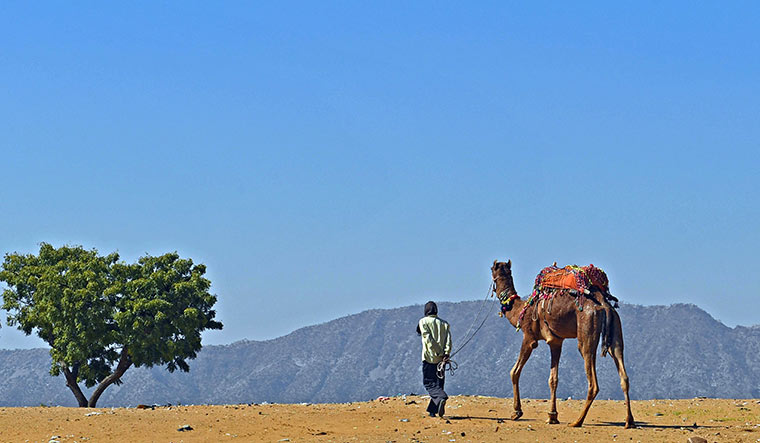RAJASTHAN HAS OVER the years been marketed to tourists as the most vibrant part of India that gives them a truly royal experience. The aggressive marketing had its impact; the number of tourists grew steadily year on year, till the Covid-19 pandemic hit.
In March 2020, 43.27 lakh domestic tourists and 86,573 foreigners had come. However, in April, the number of travellers from within the country dropped to zero, while only 86 in-bound tourists visited the state.
The numbers for 2020, compared with 2019, showed a drop of more than 71 per cent. If 5.22 crore domestic tourists and 16 lakh foreigners had come to the state in 2019, their footfall in 2020 plummeted to 1.51 crore and 4.46 lakh, respectively.
As Rajasthan now comes out of the pandemic’s shadow and prepares for the upcoming tourist season, there is a re-orientation of focus and change in strategy. As recovery from the pandemic began in 2021, it was the domestic tourist who helped the tourism sector stay afloat. In 2021, 2.19 crore domestic tourists came to Rajasthan, compared to 35,000 foreigners. Compared with 2020, there was a 44.45 per cent increase in the number of domestic tourists in 2021, while the number of foreign visitors fell by more than 92 per cent.
“The pandemic brought with it many lessons. It has taught us the importance of domestic tourism and has enabled us to better frame our marketing strategies for tourists coming from other states,” said Gayatri Rathore, principal secretary, Rajasthan Tourism.
After two years, the Rajasthan Domestic Travel Mart was organised in Jaipur this July, and more than 9,000 structured business-to-business meetings were held. Around 200 tourism product suppliers such as hoteliers and tour operators, and around 300 domestic buyers participated in the event. The aim was to market Rajasthan to domestic tourists ahead of the tourist season in the state—from September to March.
A major reason for the boost in the number of domestic tourists in 2021 had been the restrictions on international travel. Chandan Singh, operations manager of Buena Vista Resort, said that if the hoteliers in Rajasthan realised that there was a domestic clientele for high-end luxury products, domestic travellers, too, discovered that they can get memorable holidays, with the added snob value, within India. “Tourism was the first industry to feel the impact of Covid-19,” he said. “While there was no income, there were expenses to be met, of maintenance, of paying salaries to the staff etc. The period of recovery has been an eye-opener, for us and the domestic tourists.”
Players in the tourism sector changed their strategy, and came out of the pandemic better placed in their outreach to clientele. Many hoteliers were able to shrug off their dependence on travel agents and reach out to a wider range of customers.
Angad Deo Mandawa, director, Mandawa Group of Hotels, said the pandemic was actually a blessing in disguise for the hotel group. “When two crore tourists could not travel out of India, it helped hotels like ours,” he said. “Also, one big healthy change is that we do not have to depend on agents. Business with them involved a credit line and it was always difficult to get money out of them. More than 80 per cent of the bookings are now done through online portals.”
Rajasthan ranks sixth in terms of foreign tourists and tenth in terms of domestic tourists, but accounts for 75 per cent of heritage hotels in India. These have traditionally catered primarily to in-bound tourists. With regard to high-end hotels and resorts, majority of them falling in the heritage category, around 70 per cent of the guests were from outside India.
Asked how the domestic clientele was different from foreign tourists, Farooq Qureshi, general manager, Rajasthan Tours Private Limited, said the perception about the former being unruly or stingy or not fully appreciative of the heritage properties is changing fast. “The tourists of today are vastly different from what they were like in the 1980s or 1990s,” he said. “They are ready to pay, but yes, they are more demanding and want better value for their money.”
Even as the domestic tourists are being celebrated and wooed, the foreign tourist is much awaited. Karan Rathore, vice chairman, Services Export Promotion Council, said there was a need to regain the lost market, and for that the council has told all tourism stakeholders about a need to rebrand India as a must-visit destination. “Besides tourist attractions, we need to emphasise on the improved infrastructure and connectivity, as well as safety. An aggressive marketing of Incredible India as a global brand has to be done,” he said.




